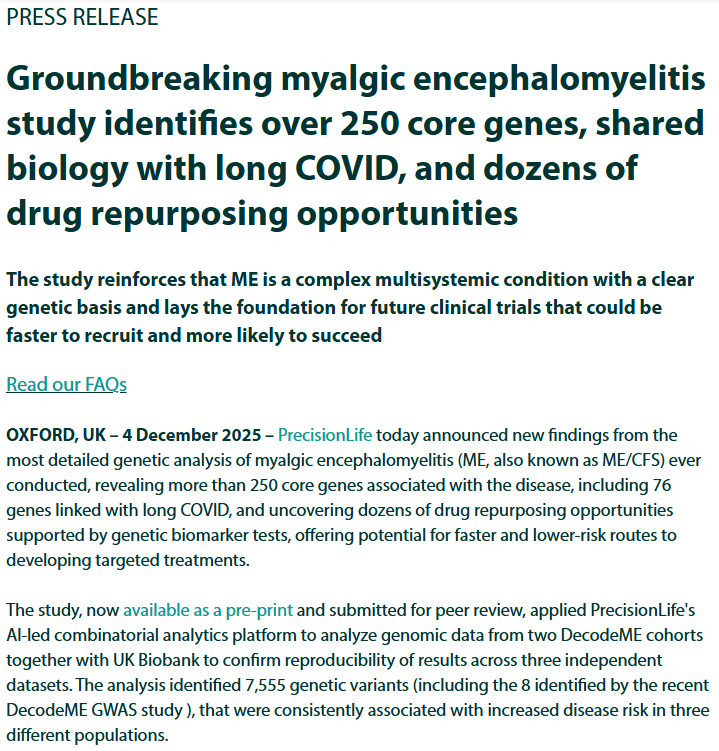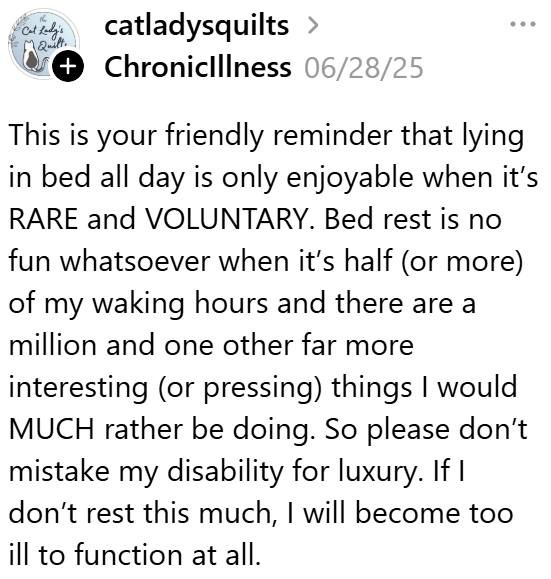PRESS RELEASE
Groundbreaking myalgic encephalomyelitis study identifies over 250 core genes, shared biology with long COVID, and dozens of drug repurposing opportunities
The study reinforces that ME is a complex multisystemic condition with a clear genetic basis and lays the foundation for future clinical trials that could be faster to recruit and more likely to succeed
Read our FAQs
OXFORD, UK – 4 December 2025 – PrecisionLife today announced new findings from the most detailed genetic analysis of myalgic encephalomyelitis (ME, also known as ME/CFS) ever conducted, revealing more than 250 core genes associated with the disease, including 76 genes linked with long COVID, and uncovering dozens of drug repurposing opportunities supported by genetic biomarker tests, offering potential for faster and lower-risk routes to developing targeted treatments.
The study, now available as a pre-print and submitted for peer review, applied PrecisionLife's AI-led combinatorial analytics platform to analyze genomic data from two DecodeME cohorts together with UK Biobank to confirm reproducibility of results across three independent datasets. The analysis identified 7,555 genetic variants (including the 8 identified by the recent DecodeME GWAS study ), that were consistently associated with increased disease risk in three different populations.



